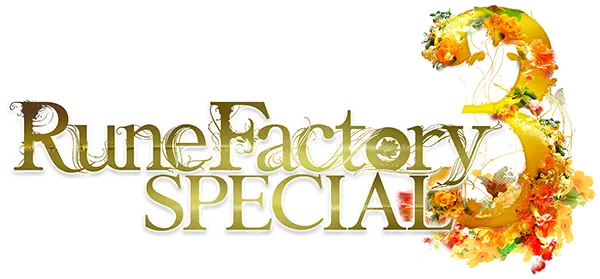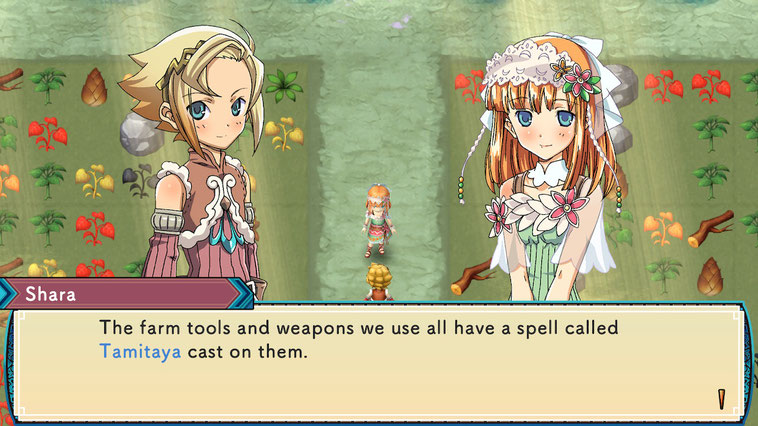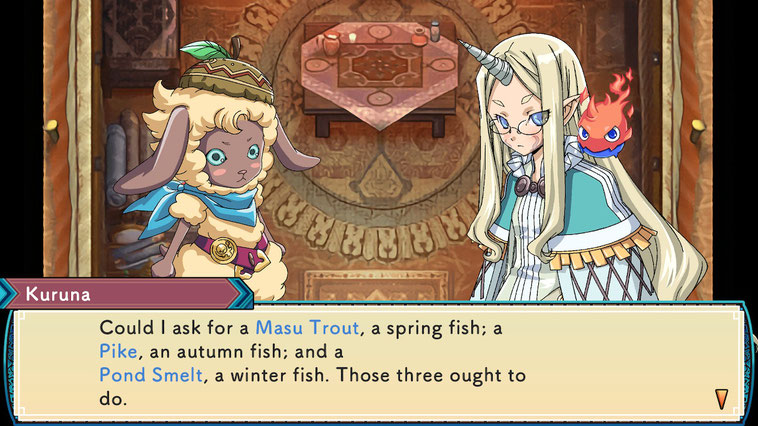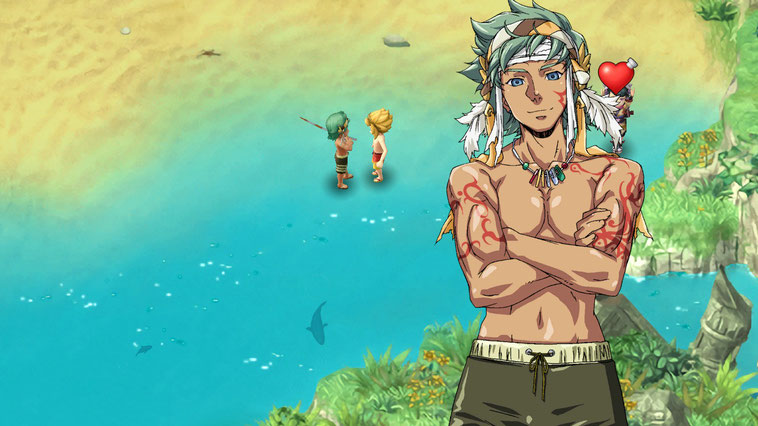|
The Rune Factory series is an interesting one, if perhaps mainly for its turbulent development history. Originally a spin-off developed for the Story of Seasons' series 10th anniversary, the first game, released on the DS back in 2006, was popular enough to become its own series, combining the trademark farming aspect with action RPG gameplay in a fantasy European setting. Unfortunately, the original developer of the series, Neverland, filed for bankruptcy back in 2014, leaving the series' future uncertain. Thankfully, though, it would make a return in 2019, with a remaster of the fourth entry, a fifth game, and now this re-release of the third game, originally released for the Nintendo DS in 2009.
Rune Factory 3 was also quite special when it came out, mainly because it streamlined many of the more contested elements, improved the pacing and made the combat actually fun. And while all of this still holds up, it does lead to a game that feels somewhat pointless with RF4 existing.
The game opens up with your main character, in the form of a Wooly, this world's equivalent to sheep, reaching a little town by the name of Sharance and being taken in by resident flower girl Shara. Come the next day, you suddenly take on a human appearance, minus any and all memories of your past, besides your name. With nowhere else to go, you are offered to take up residence in the local Sharance Tree, while taking over the farm contained within its basement. In essence, this is the same plot formula that the previous two games in the series also used, and even outside the series as a whole, it's nothing to write home about - even with the revelation of the protagonist's ability to switch between monster and human form, and the implied xenophobia that drove a wedge between humans and beastkind, it's a fairly standard by-the-book plot.
However, the game does make up for its lack of originality with some truly excellent characters and associated writing. The town of Sharance, small as it is in size, is brimming with personality and eccentricities, from the lazy shopkeeper Karina and her overbearing mother, to the rich family who speaks in opposites, there is plenty to see, and the large amount of dialogue present, even for daily interactions, ensures that things stay engaging, and the closer you get to these people, the more you feel at home, giving RF3 a uniquely familiar feeling, something only matched by 4 - like many other things in the series.
At its core, Rune Factory consists of three aspects that complement each other: farming, relationship building and dungeon crawling, and this game arguably perfected the formula in that regard. The farming itself is par the course for any Story of Seasons veteran; you clear the field, plow it, plant seeds, water them daily, sell them, repeat. Naturally, the weather plays a big role; on rainy days you don't need to water your crops, and tornados will severely damage your crops, adding a bit of chaos to the overall gameplay. When compared to previous games, RF3 revised the weather system quite a bit; before, any weather would stick around the whole day, whereas here it can start raining in the middle of the day and clear up within a few hours; the precipitation might also change to cloudy, which has no effect beyond aesthetics, and as a nice little touch, it might start to snow during the last few days of fall, mimicking how snowfall can occur early in some places.
Once you build your monster barn, you can recruit enemies out in the field by throwing gifts at them and brushing them. These come in two types: livestock and fighting buddies. Livestock, naturally, is mainly useful for producing things such as fur, milk, eggs and so on, while fighting buddies do exactly what you think they do: they can be brought to fight alongside you when dungeon diving. It should be noted that this distinction isn't clearly spelled out by the game, but it's much more efficient to bring a kobold with a bow along than a cute little sheep. Also, when not helping you fight, you can also give your monsters farming chores, like watering certain parts of the field. Naturally, they need a break every now and then or else their health will gradually drain. Thankfully, the care itself is rather simple: all you need is grow fodder and throw it into the bin, all monsters are fed automatically and also drop all their goodies without the need for additional tools.
In the same vein you can also take befriended townsfolk along to fight by your side. The impressive part is that each character has unique properties - Shara will mostly stay back and heal you (her only "weapon" being a watering can), while the headstrong dwarf Zaid has a tendency to charge headfirst into danger (and getting himself killed) and so on - it's fun to see all the little intricacies of the AI, and it's a testament to the amount of attention to detail the game was given.
Combat itself is also, for the first time ever, balanced and fun. In the previous games, combat consisted of hitting enemies, running away while they attack, and then repeating, making the experience basically one long, looong game of "red light, green light", which naturally was neither very satisfying nor all that fun. RF3 does away with that completely and not only increases the weapon selection - introducing dual blades and the Wooly kung fu, which later games would adapt into the fist weapons. Basically, each weapon comes with its own advantages and disadvantages - dual blades are fast and cover a lot of ground, but prevent you from using shields, hammers and axes are extremely powerful and boast high crit rates but are slow, spears are good for fighting from a distance but not as powerful and so on - while nothing new on paper, the execution is what truly sweetens the deal. Each weapon has a basic combo, with you learning charge attacks and combo extensions as you keep using them, which also gives you an incentive to swap weapons often.
Rounding out the package is the plethora of skills and magic you can use - enemies have different elemental weaknesses and resistances, so experimenting is once again key - some spells may home in on enemies, others may work as a laser that hits everything in its path, and of course there are various healing spells to restore HP or cure status conditions. The total weapon and spell list is absolutely staggering, especially when stacked up against the game's total length.
More importantly, the difficulty is much more balanced than it was before - which means the game went from unfair to challenging, but fun. A teeny-tiny but major addition is that you can now push a button to strafe, allowing you to quickly evade enemy attacks, meaning you no longer have to run out of the way all the time. You'll still have to for bigger attacks, especially from bosses, but it's nowhere near as hard as it was before. Secondly, the game did away with both the Game Overs and streamlined the teleport system. If you run out of health, no matter where you are, you no longer lose your progress, you instead wake up at the clinic, minus a fee that is based on your character level. Moreover, avoiding cheap deaths is now much easier, as you start with a teleport spell that is insanely versatile. Use it in a dungeon and you spawn in front of your farm (conveniently next to three of five major dungeon entrances). Use it in. front of your farm, and you spawn inside your house, next to the save point. Finally, the spell itself costs no MP to cast and can also be used when your magic is sealed, and it even works during most boss battles, so having to pay the revival fee is very easily avoidable.
Moreover, the skill system was (like almost everything else) comprehensively overhauled to work in your favor. Basically, the game has a skill level for everything you do - yes, absolutely everything. Not just farming or weapons, but even for things as mundane as walking, eating, bathing and even sleeping - any action in the game, any, has a skill associated with it, and each of these skills affects your general character growth, which ensures that nothing you do in the game is pointless, as all these small gains do add up and seriously help you grow. Also, when harvesting crops, they may produce little wisps that not only restore your stamina, but also raise a random skill by one. While not reliable, it's one incentive to keep the farming going after getting filthy rich - which can happen faster than you might think. In addition to this, you also got your general character, which only increases with combat experience, and which can go way above the usual 99 - I stopped playing after reaching about 200 and having nothing else to do anymore - but if you're dedicated enough, you can go all the way up to 10.000, although by that point there will be no challenge left, not to mention that it's gonna take hours of your life.
In addition to all of this, the game also places a big emphasis on crafting. You see, the equipment and items you can buy in shops will only carry you so far - after a certain point, the game expects you to familiarize with the crafting mechanics, which are thankfully straightforward. After acquiring the requisite crafting stations, or kitchen tools, you can craft items from all sorts of things; enemy drops, crops, flowers, you name it. Recipes are learned from buying recipe bread from the local restaurant, with progress being limited by the amount of loafs available per day as well as your respective skill level being tied to the amount of things you can craft. You can also theoretically make stuff without the associated recipe, but this will cost twice as much stamina as doing so without, making it somewhat unfeasible.
Weapons and armor can also be further upgraded, up to ten times per piece, by applying different items to them to raise various stats or adding passive properties, such as inflicting status ailments. This, too, is surprisingly intricate, and you're discouraged from using the same type of item multiple times, as the effects will diminish if you do so. Come endgame, you can craft some truly ungodly stuff that deals four digit damage and leaves you unharmed. And that's not even getting into the plethora of additional things the game never tells you about - try throwing a bottle of oil at an enemy and then cast an explosion spell for instance, or weaponize your failed dishes to inflict every negative status in the game at once.
The way the story progresses was also changed - instead of needing to talk to the right person at the right time, things are mainly triggered by taking quests from the town's bulletin board. There are main quests that further the story as well as smaller ones that unlock more items (most importantly seeds) for sale. This works for a much smoother experience than before, and doing these quests also increases your relationship with the quest giver, which was a very slow process before.
And naturally, getting married to your sweetheart is an integral part as well, and this time around, you can actually take them out on dates and hear some personal stories from them - helped along by the much better writing, making these love interests the ones with the most character yet, and choosing one is actually fairly hard, as they all make fabulous waifu material - although sadly there is no same sex option or ability to play as a female character, despite the game clearly teasing things with the muscular and brash Carlos.
Another notable aspect is the NPC behavior - previously, they would follow strict schedules, mainly hanging around in the same place for several hours a day, only changing on rainy days or festivals. This is completely thrown out the window here, with all NPCs having much more elaborate schedules, walking around the town, conversing with each other and greeting you as you pass by; it's all rather impressive considering this was originally for a system with very limited memory, which helps Sharance come alive.
At the same time, the streamlining of all these mechanics also lead to the game's biggest flaw: its very short length. There are only five main dungeons, all of which can easily be completed in an in-game day, save for the very last one, which arbitrarily pads things out by requiring certain items to progress at various points. As a result, the game's world feels pretty small and cramped. Remarkably, RF1, 2 and Frontier would be just as short as this one if all the tedious fluff were removed - it's more that RF3 does away with the annoying bits, such as having to wait for certain characters to arrive or speaking to them at the correct time. There is an optional dungeon with various tiers you can explore, but it has no bearing on the plot, and since this version doesn't feature the multiplayer mode anymore, is ultimately somewhat boring. Either way, the game can comfortably be beaten in 25 -30 hours, which was alright for a DS game, but not so much for a modern title.
Sadly, many of the quality of life features introduced in 4 did not carry over to this remaster, despite running on the same engine. The major pain point is that you cannot craft any items in bulk, something which greatly helped speed up things, recipe bread that doesn't teach you anything is still consumed, and improving your soil quality still requires you to till corn or weeds with your hoe one-by-one instead of introducing the fertilizer bin. None of this is a major game changer, mind you, but it's still sad that these features didn't make it in.
More inexplicably, the controls were changed - this makes perfect sense given how it's reusing 4's engine, except it also has deviations from that. The biggest trip-up for returning players is likely the fact that items are now equipped with B, for whatever reason. Also, skipping dialogue by holding the Y button no longer works, instead you have to skip through each message individually. Once again, not an issue for new players, but once you run out of new dialogue, it becomes somewhat tedious, especially since the game highly encourages you to talk to everyone each day.
As far as the actual remastering goes, this one completely blows 4 out of the water. Whereas that game simply went for upscaling, everything was completely redone from the ground up here. The character models are bigger, better proportion and actually have more detail, the backgrounds have been redrawn and once again have more details added, and others which were hard to make out originally are now easier to spot and the character portraits during dialogue have been sourced from the original vector files, looking much cleaner and lacking the weird black outlines the original had. Also, all icons and other 2D elements were redrawn as well, which helps everything come together and pop. Likewise, the particle effects were also redone and look fantastic, especially the spell animations.
There is also a new animated opening, although that one might be a point of contention. It was a sensible choice, given how the original opening was extremely low-resolution and would look incredibly blurry, but the new art style doesn't match the in-game art, and the song is completely different and upbeat, a stark contrast to the original's very melancholic tune, ironically titled "HAPPINESS". The remainder of the music remains the same, albeit now using the MP3s of the soundtrack instead of the compressed DS versions. Amusingly, the save jingle, which is an abridged version of the original opening, still plays when using save points.
As a cute little addition, if you have save data from 4 and 5 on your Switch, you can unlock additional costumes. A not-so-cute detail, given the game's asking price, is the presence of paid DLC, including new costumes based on RF4's bachelors, as well as part of the extra content, titled "Another Episode". None of it is particularly expensive, and the game goes on sale often, but it's quite shameless to ask extra bucks for such a short game in the first place, especially given how little the new stuff adds.
Another interesting aspect is the change in publisher, and thus the English translation. The DS version was translated and published by Natsume, while this remaster is instead handled by Marvelous's new partner XSEED Games, necessitating a complete retranslation of everything. When comparing them side-by-side, they are pretty similar. One notable aspect of the new translation, however, is that it is far less localized and adheres much closer to the original script. This can be a blessing or a curse depending on how you see it. One simple example is the "flan" item. In the original, it was called "pudding", likely because American players wouldn't be familiar with this otherwise very European dessert - all flans are puddings, but not all puddings are flans. More pressingly, some of the villagers' personalities fall a bit flat, mainly Sofia. Her shtick was that she originally spoke in opposites, which resulted in some of the funniest lines in the game, such as her declaring her affection to you by threatening to beat you up with a rusty hoe. All of this comes off as very neutered and in the new translation, by virtue of sticking closer to the Japanese script. Either way, both translations are competent, and it ultimately comes down to personal preference. Also important, at least for European players, is that the game now also comes with translations into French, German and Spanish, whereas the original DS version was only available in English.
With the new translation also came a new English dub. The Japanese version is mostly the same, save for Marian, as Ayumi Fujimura couldn't come back due to taking a voice acting hiatus, necessitating a replacement to cover the new dialogue. The English version, meanwhile, replaces everyone except for Raven, who is still voiced by Cindi Robinson. Once again, whichever cast you prefer comes down to personal preference, as both dubs pull from the usual LA-based talent pool. The Japanese voices are also available if you prefer - it should be noted there isn't much in the way of fully voiced dialogue anyway; characters only ever speak full sentences during their introductions before switching to random voice clips, which does have the potential to become grating, with Shara's infamous laugh being quite possibly the most prominent example, right next to Daria's constant shouting of "Rainbow!".
As far as version comparisons go, there isn't much to write home about. The PC version obviously has more settings, but these aren't really needed for a mainly 2D game, and the mouse and keyboard controls are, once again, somewhat problematic, so if you buy it on Steam, it is best played with a controller. The Switch version runs at 60fps with no dips whatsoever. The Steam version is, however, also optimized for the Steam Deck and runs beautifully, at least according to outside sources - I'm unfortunately too poor to afford a Deck of my own at this point in time.
In the end, Rune Factory 3 is still a fine game, the bigger problem being that its immediate successor, which is better in every way, has been around on multiple platforms for over five years and is cheaper to buy to boot. This puts me into a situation where I honestly cannot recommend a good game due to being completely eclipsed into pointlessness by its far better sequel, and in this case, I can't pretend it doesn't exist. So the final verdict is...
55% - hard to justify purchase
Pros:
- It finally made the series fun!
- Great characters and dialogue
- A beautiful remaster as a whole
Cons:
- Too short
- New content is very little and feels lazy






Write a comment